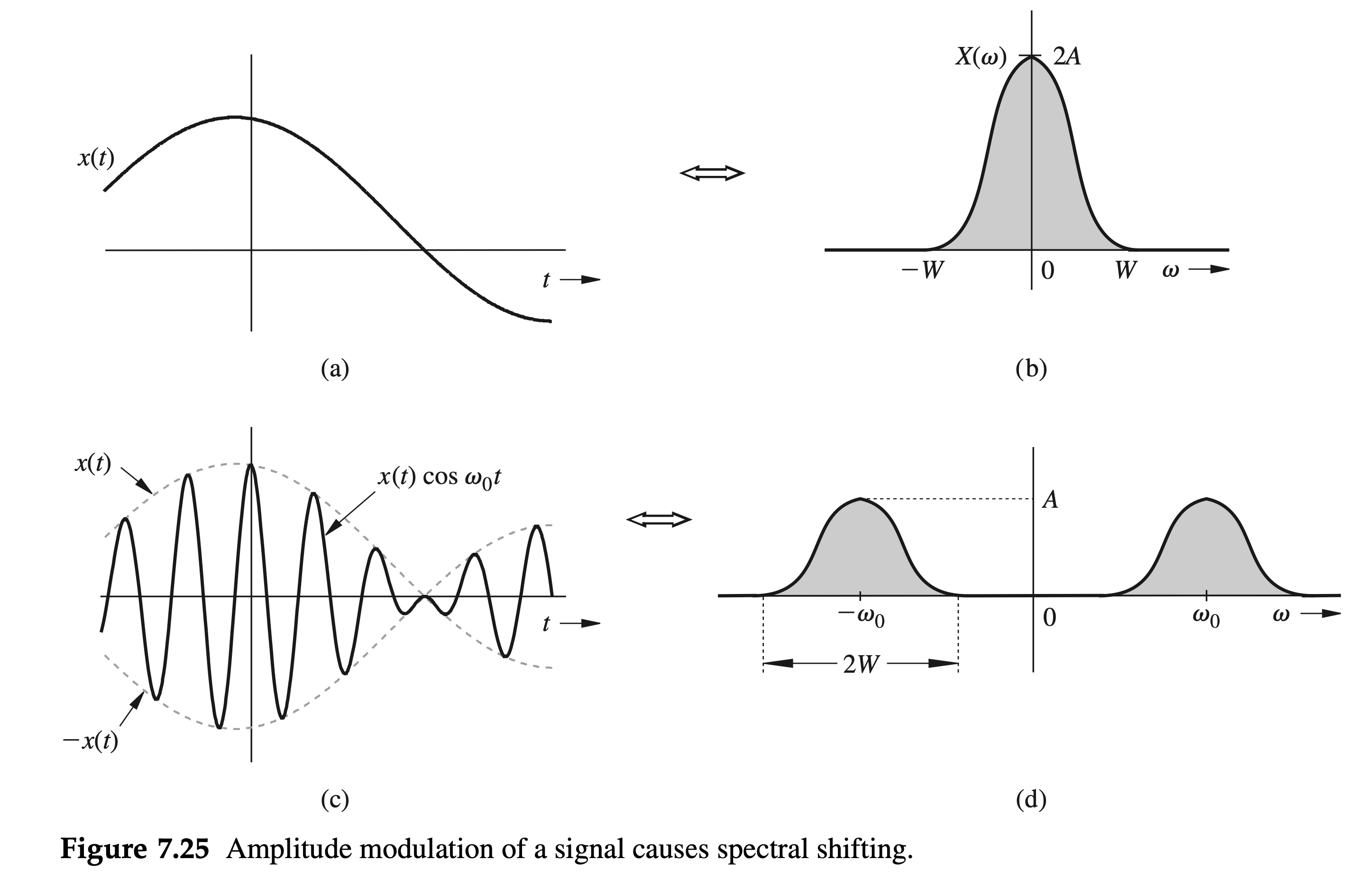Properties of the Fourier Transform
Sources:
- B. P. Lathi & Roger Green. (2018). Chapter 7: Continuous-Time Signal Analysis: The Fourier Transform. Signal Processing and Linear Systems (3nd ed., pp. 701-720). Oxford University Press.
For a quick reference table, see Wikipedia page on the Fourier transform.
Linearity
The Fourier transform is linear; that is, if
The proof is trivial.
conjugation property
The conjugation property states that if
From this property follows the conjugate symmetry property, also introduced earlier, which states that if
Duality
The duality property states that if
Proof:
From the deginition of Fourier transform, we can write
Hence,
Changing
The scaling property
If
Proof. For a positive real constant
Similarly, we can demonstrate that if
Hence follows
The time-shifting property
If
Proof. By definition,
Letting
This result shows that delaying a signal by
The frequency-shifting property

If
Proof
By definition,
According to this property, the multiplication of a signal by a factor
Because
we obtain
This result shows that the multiplication of a signal